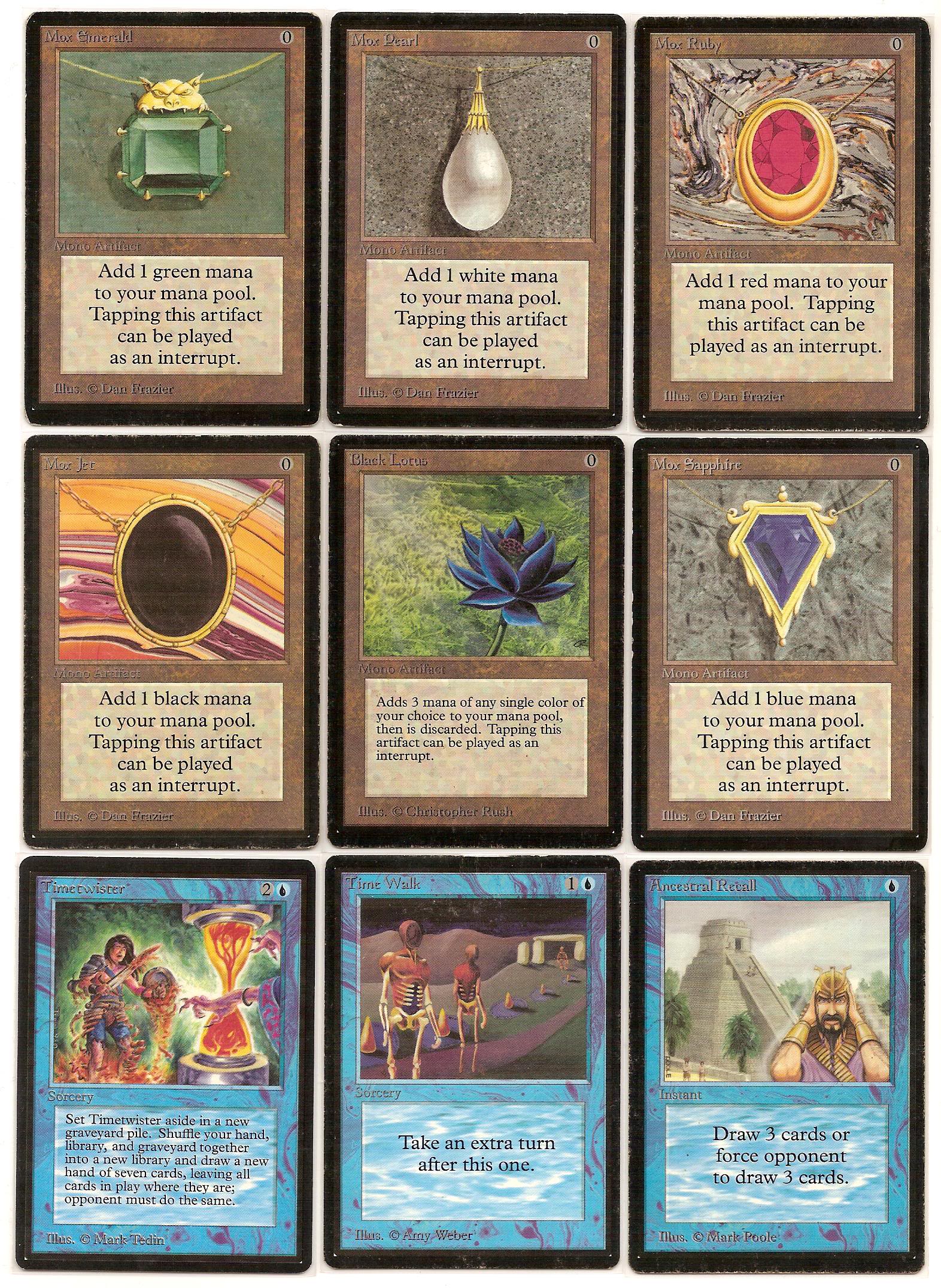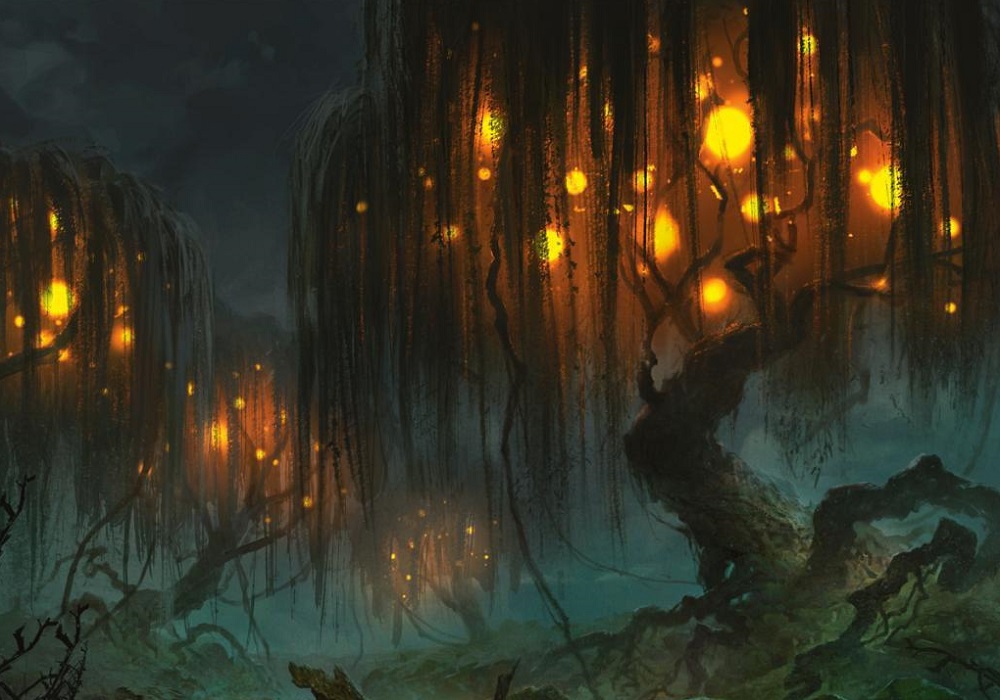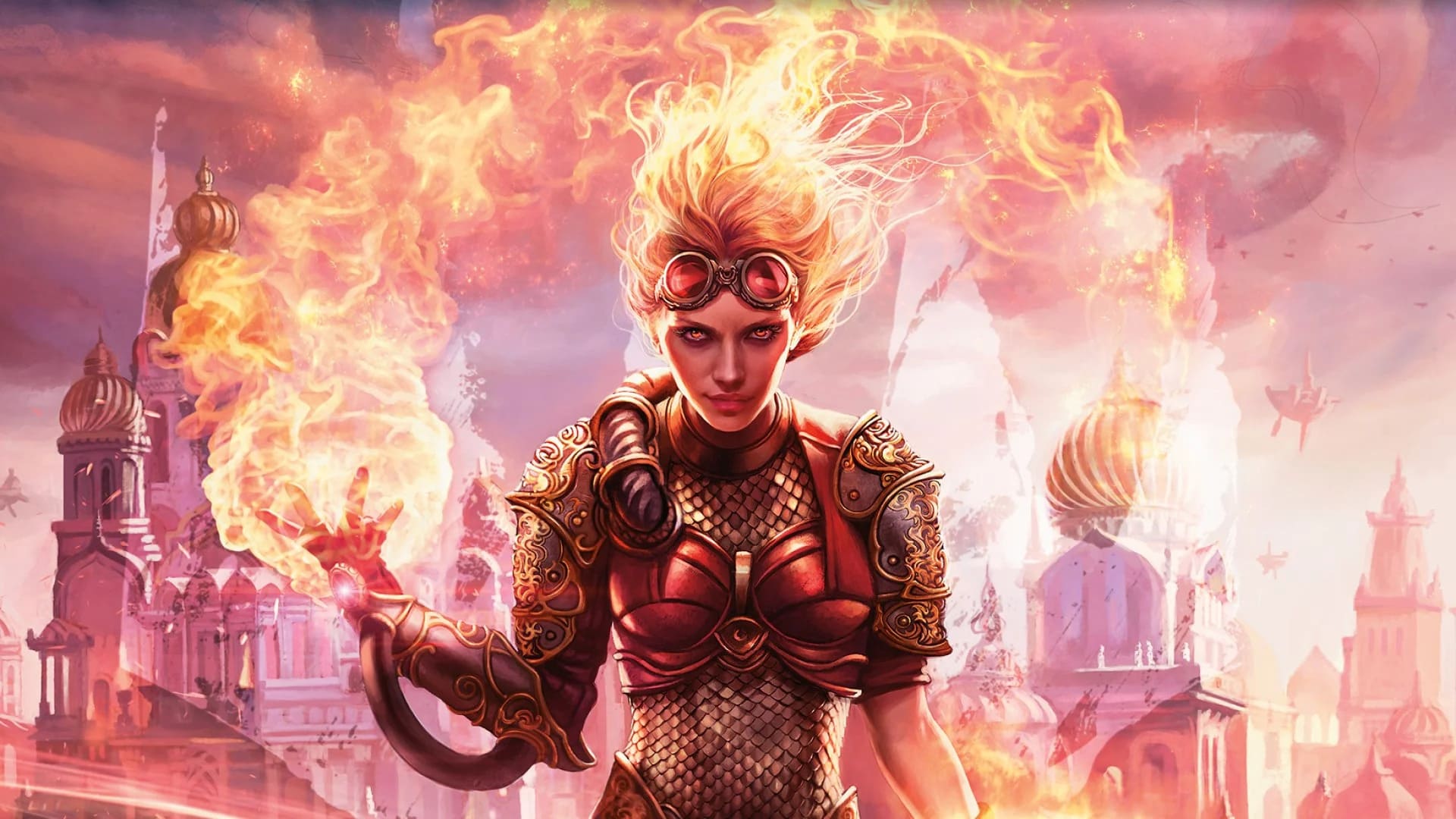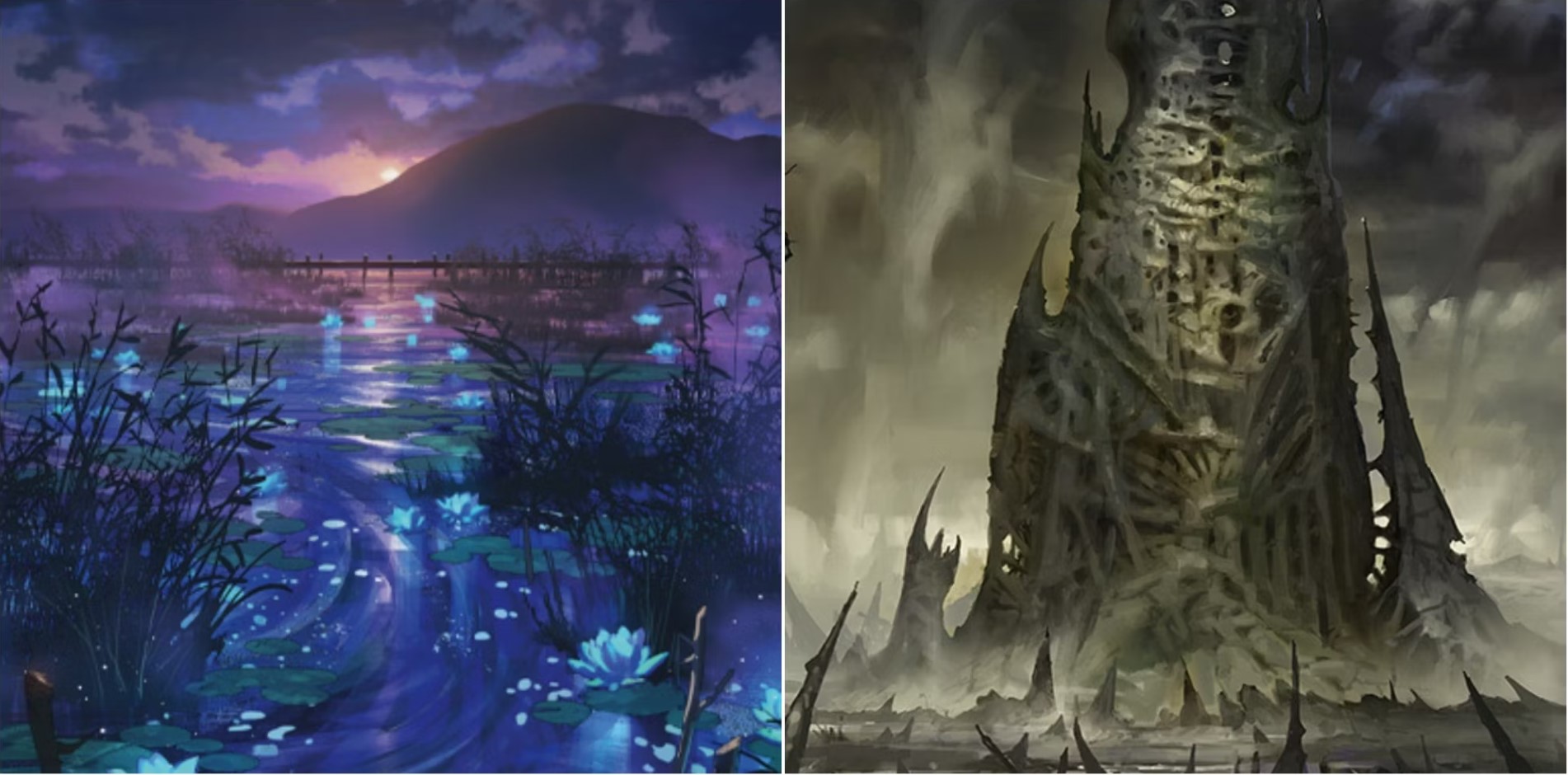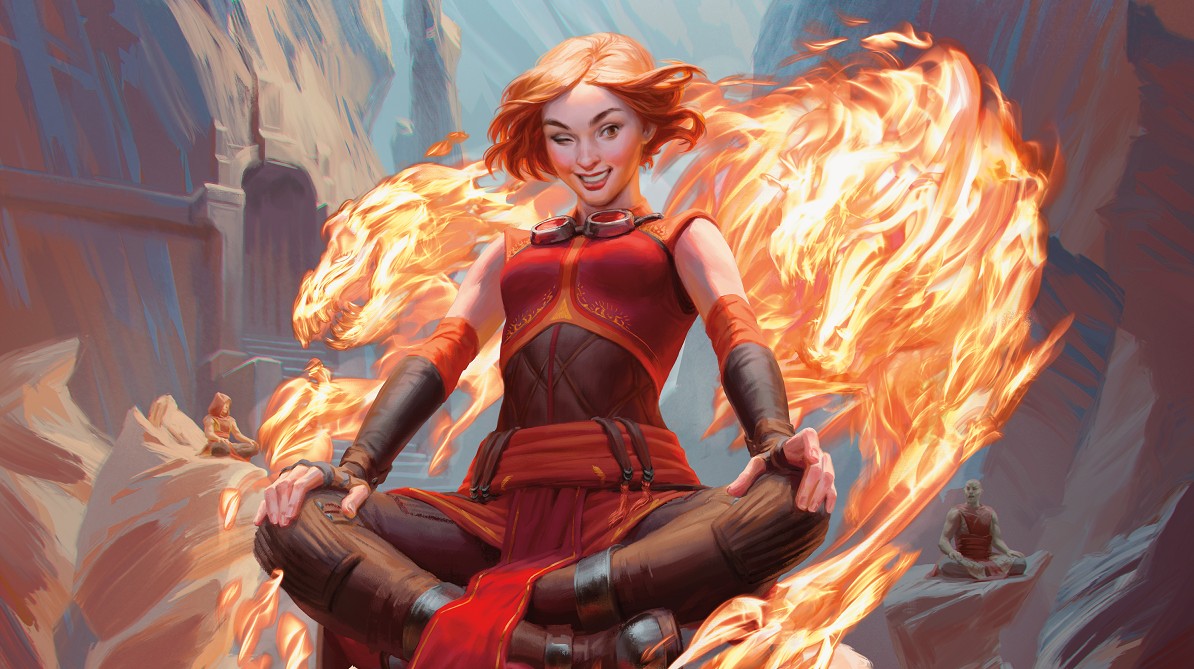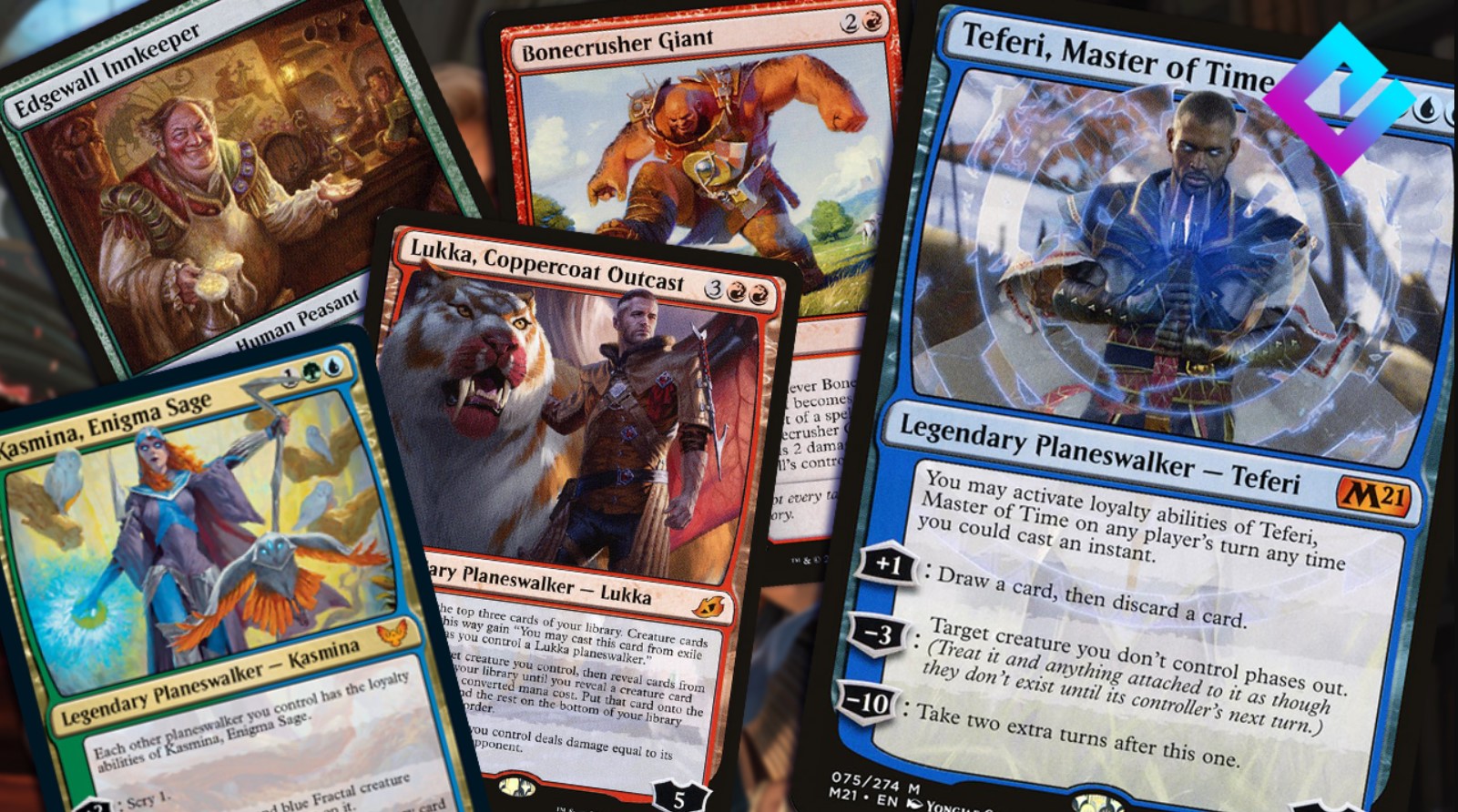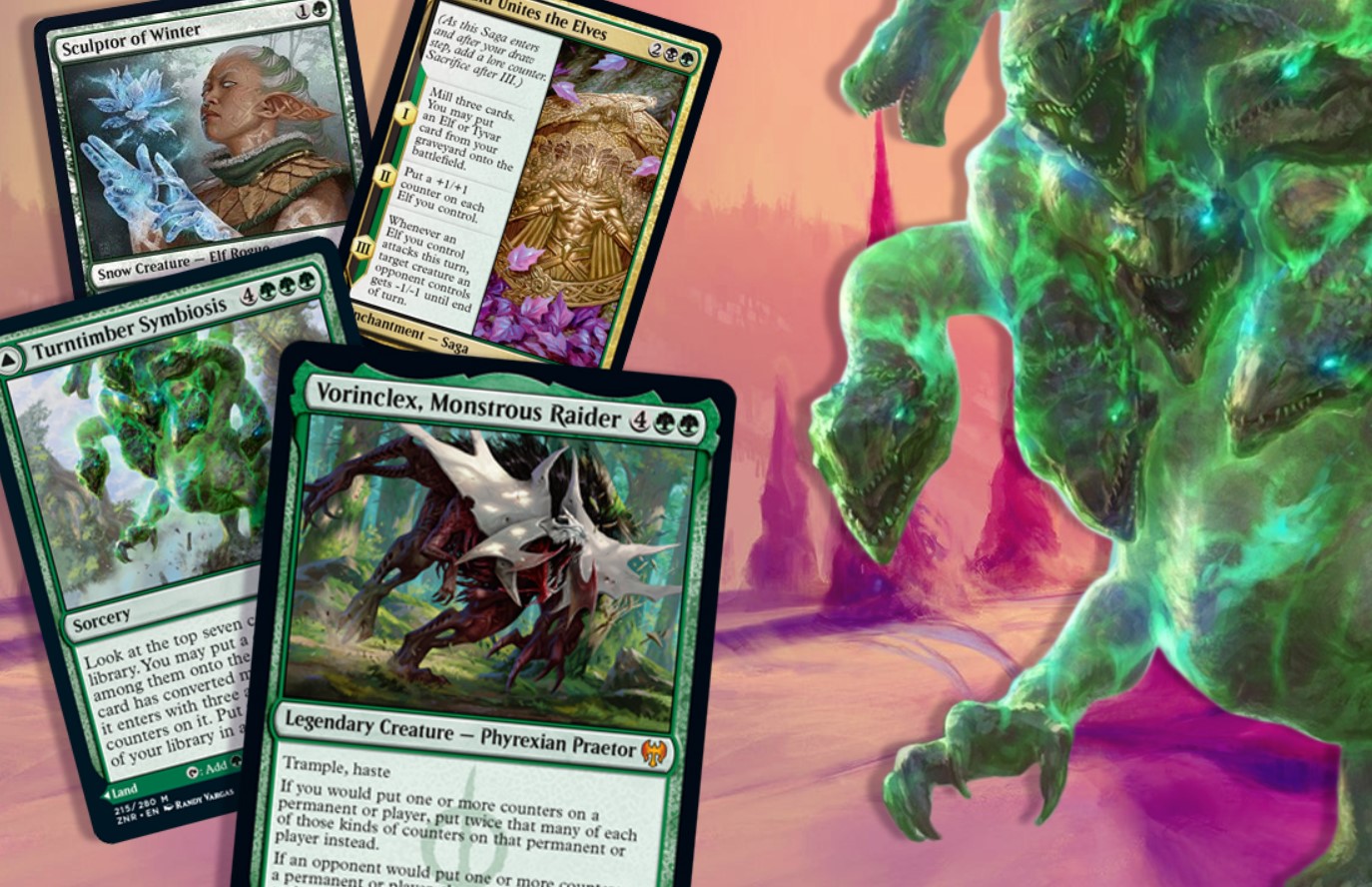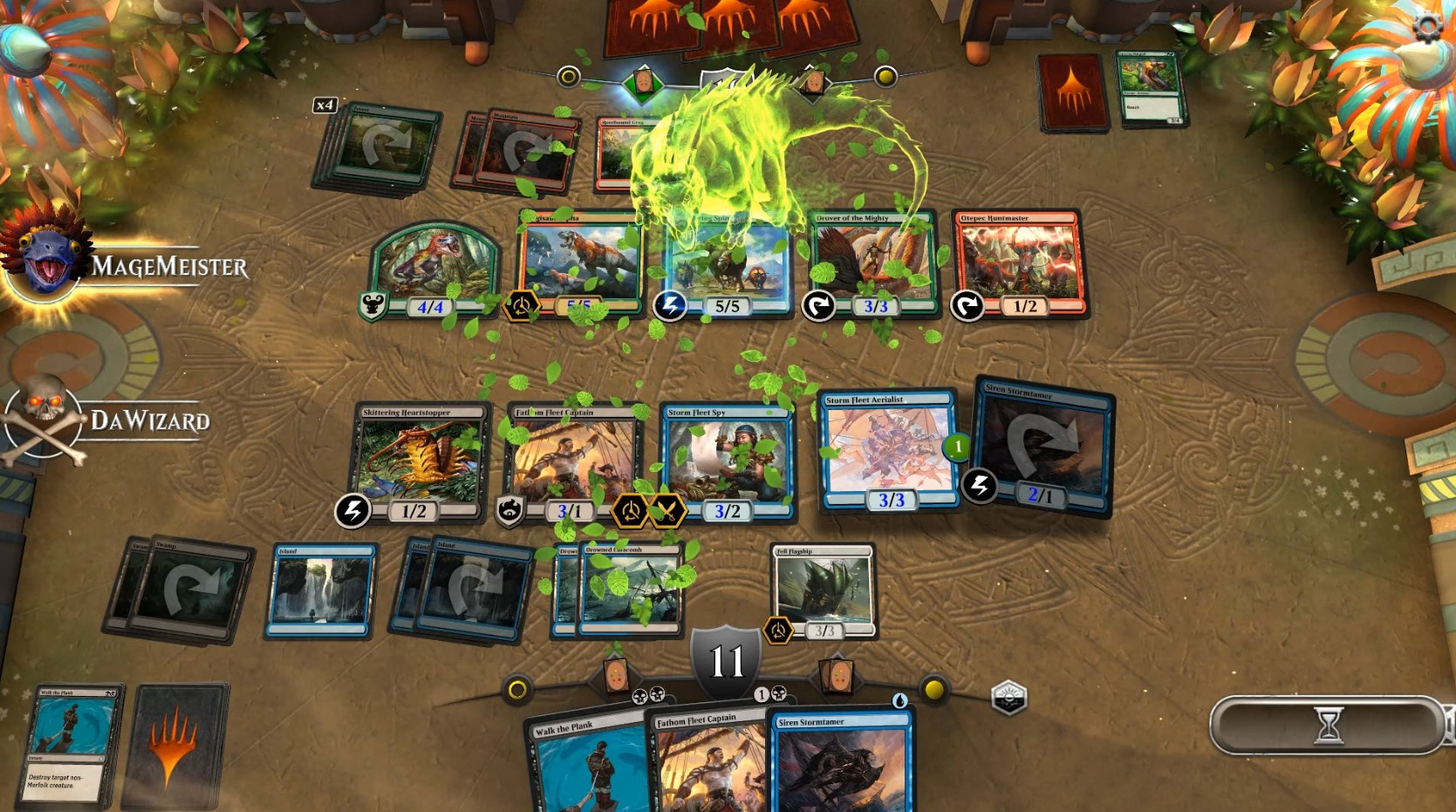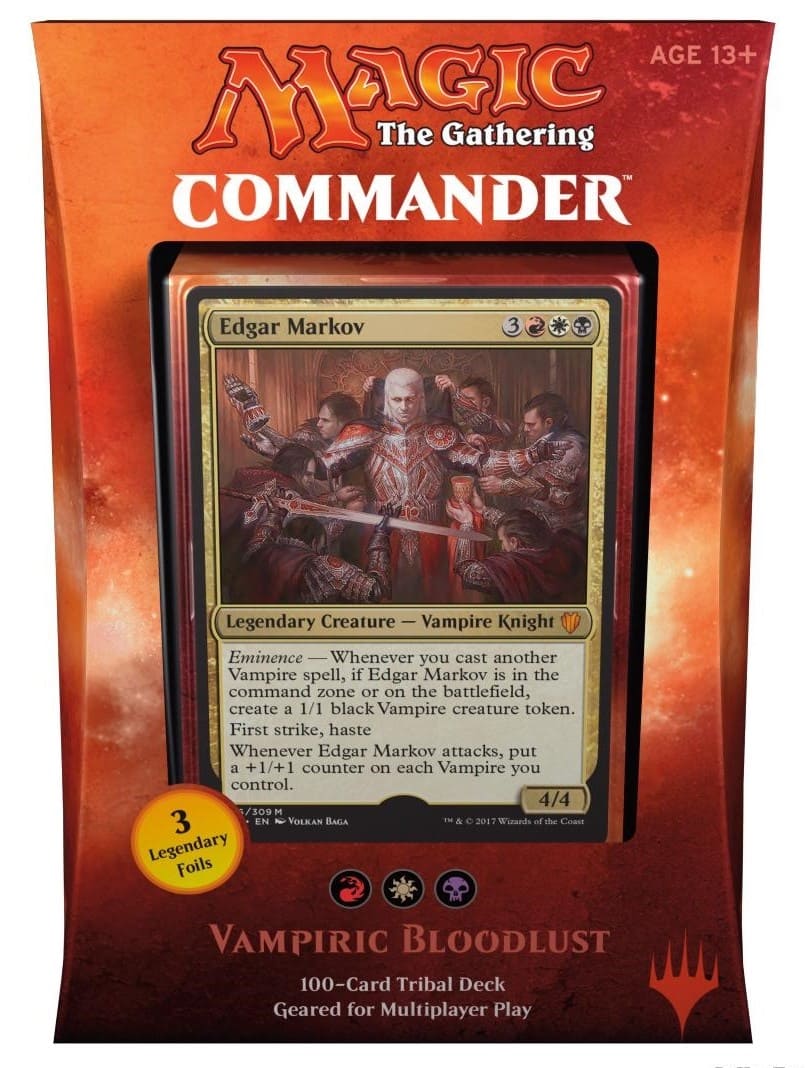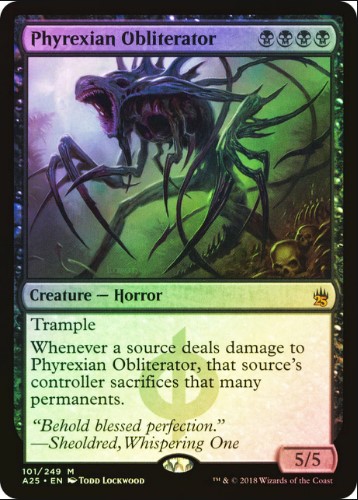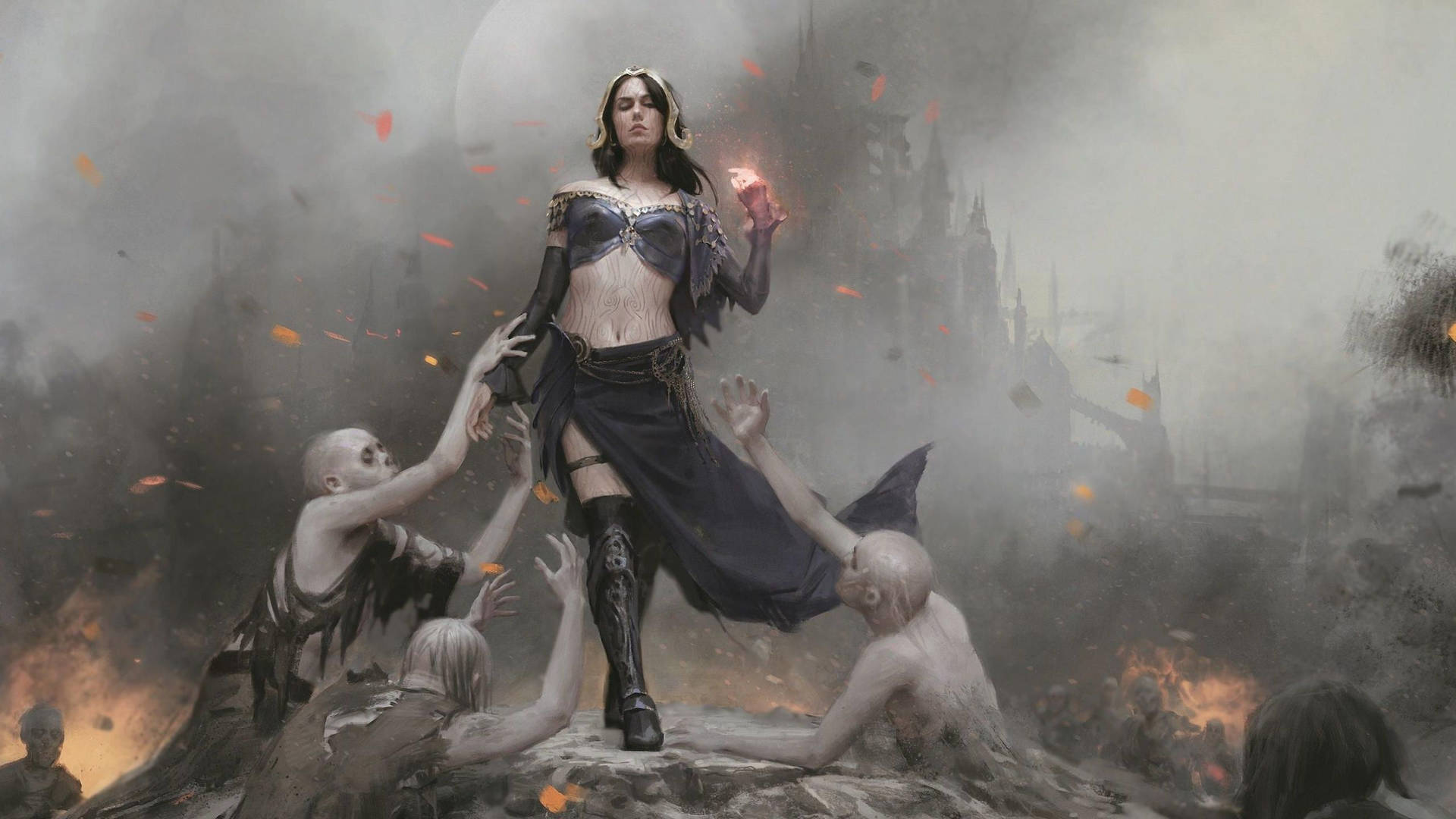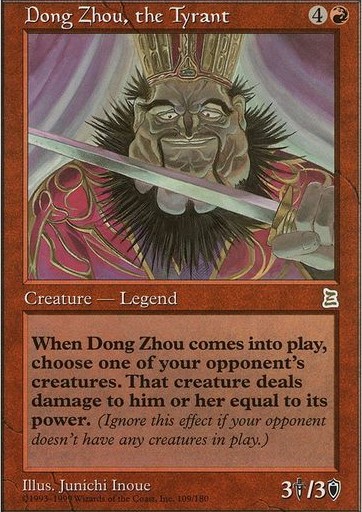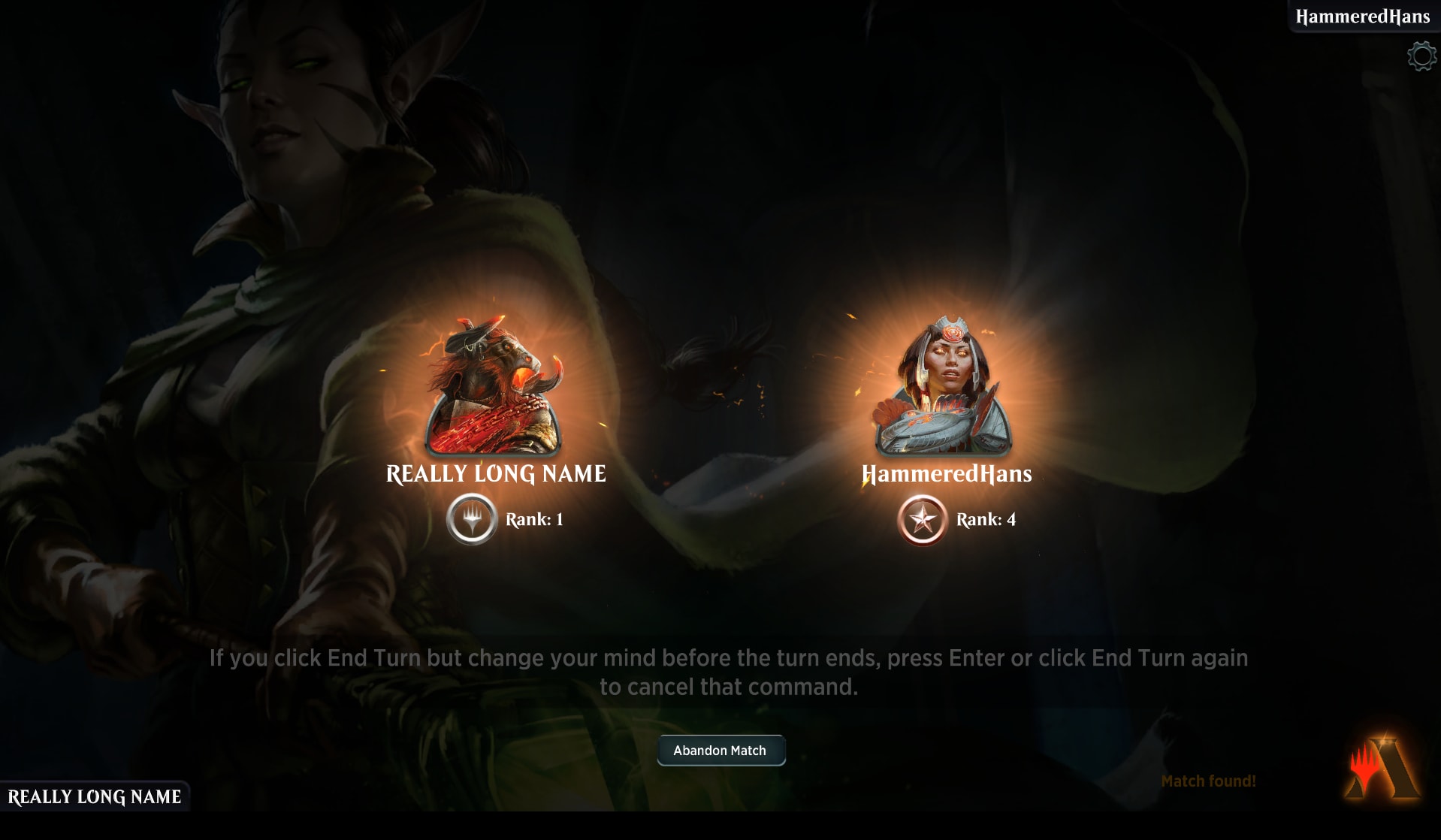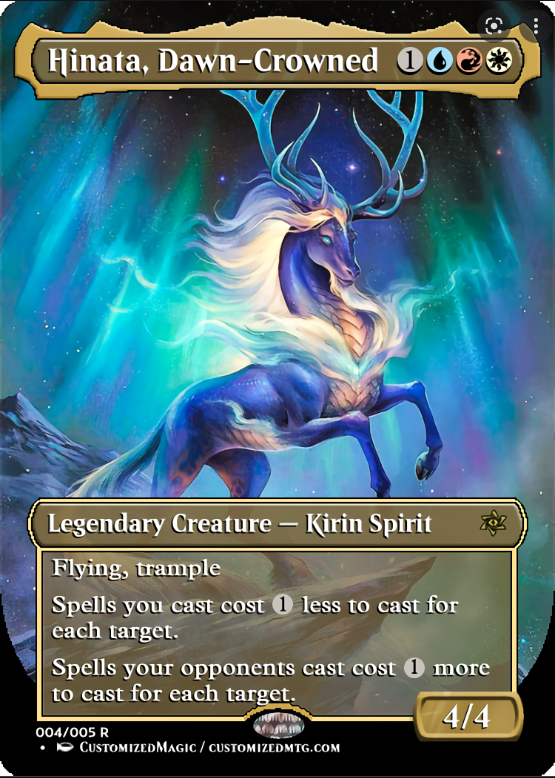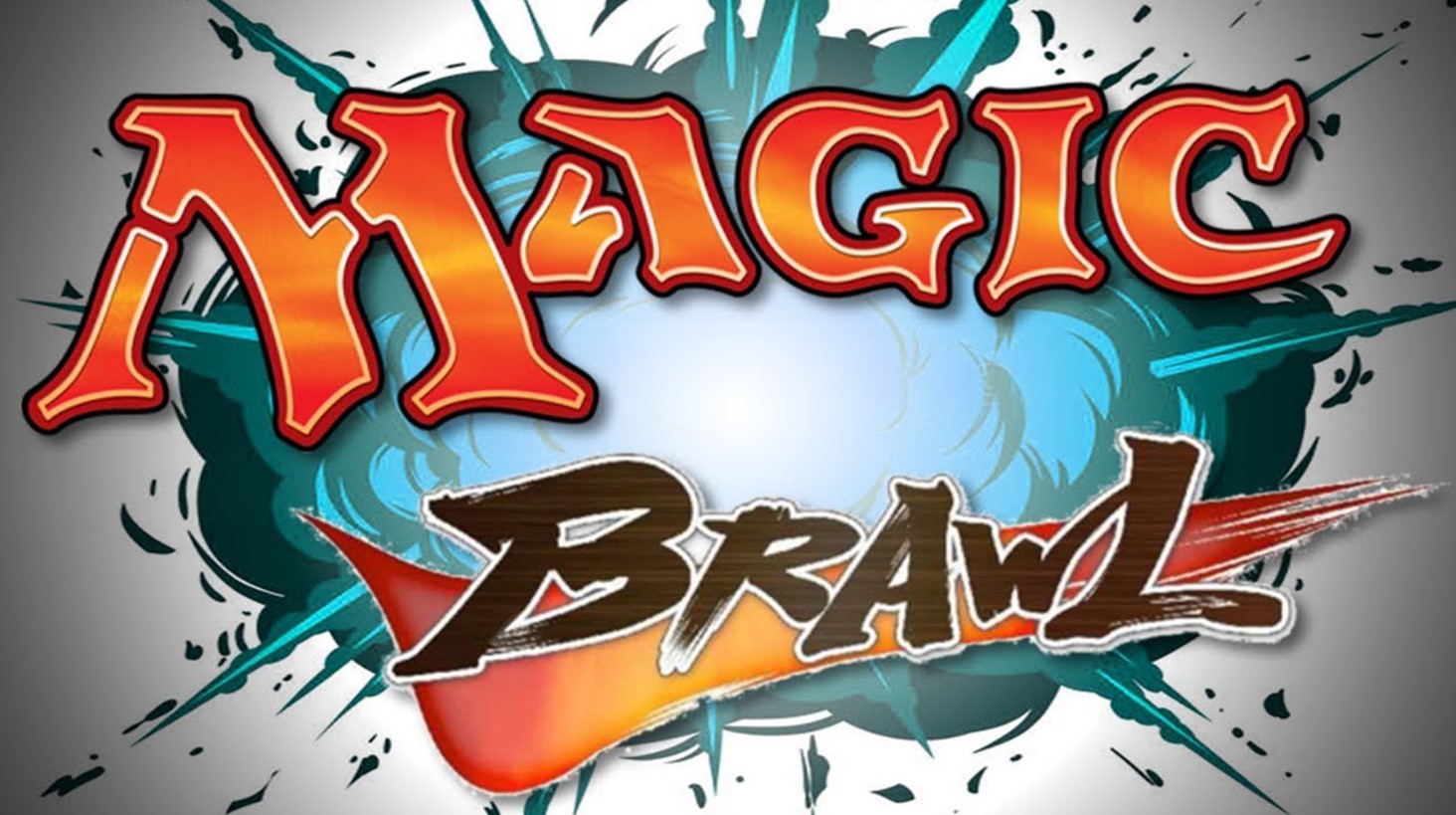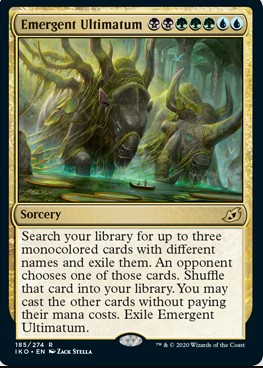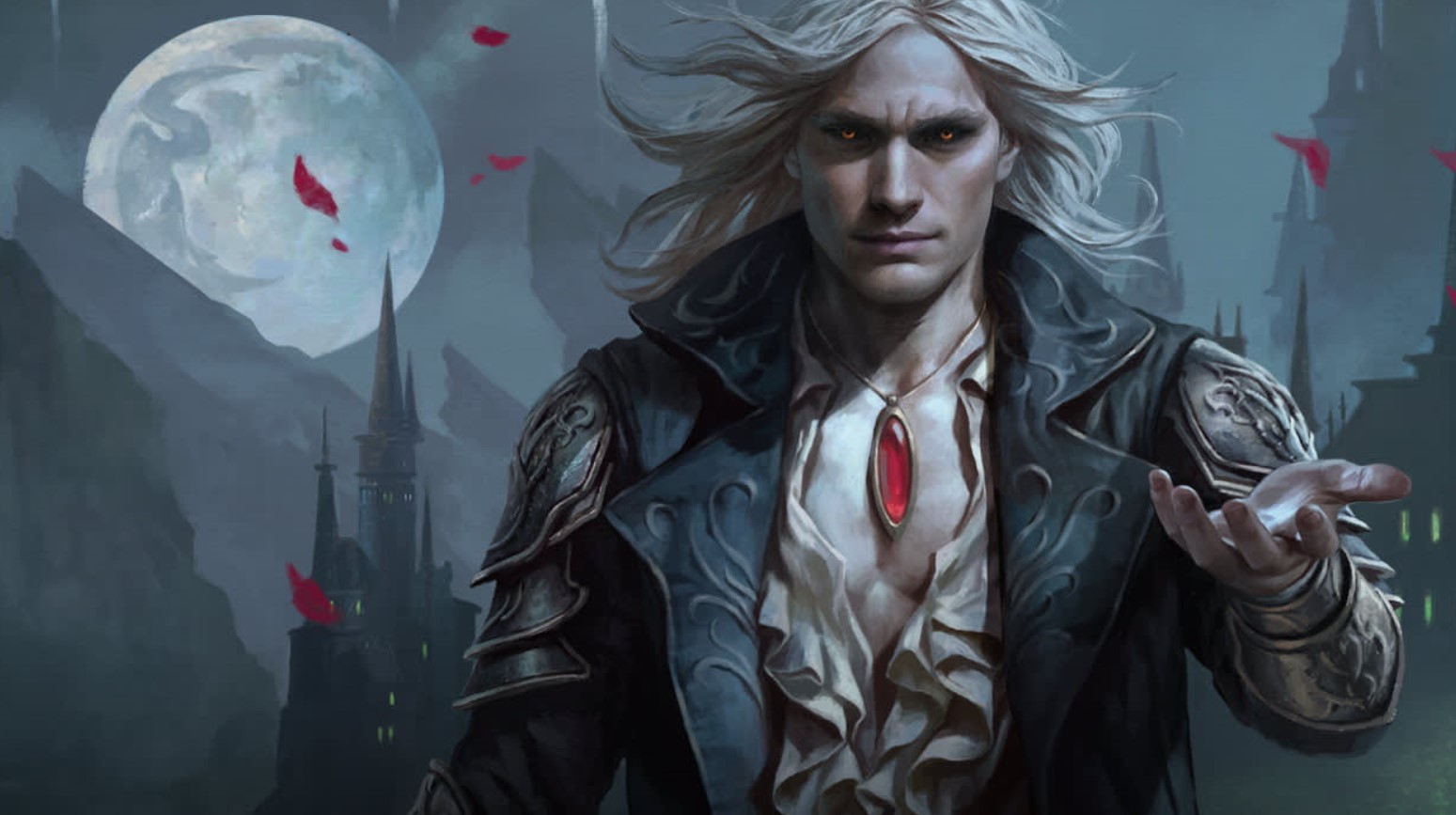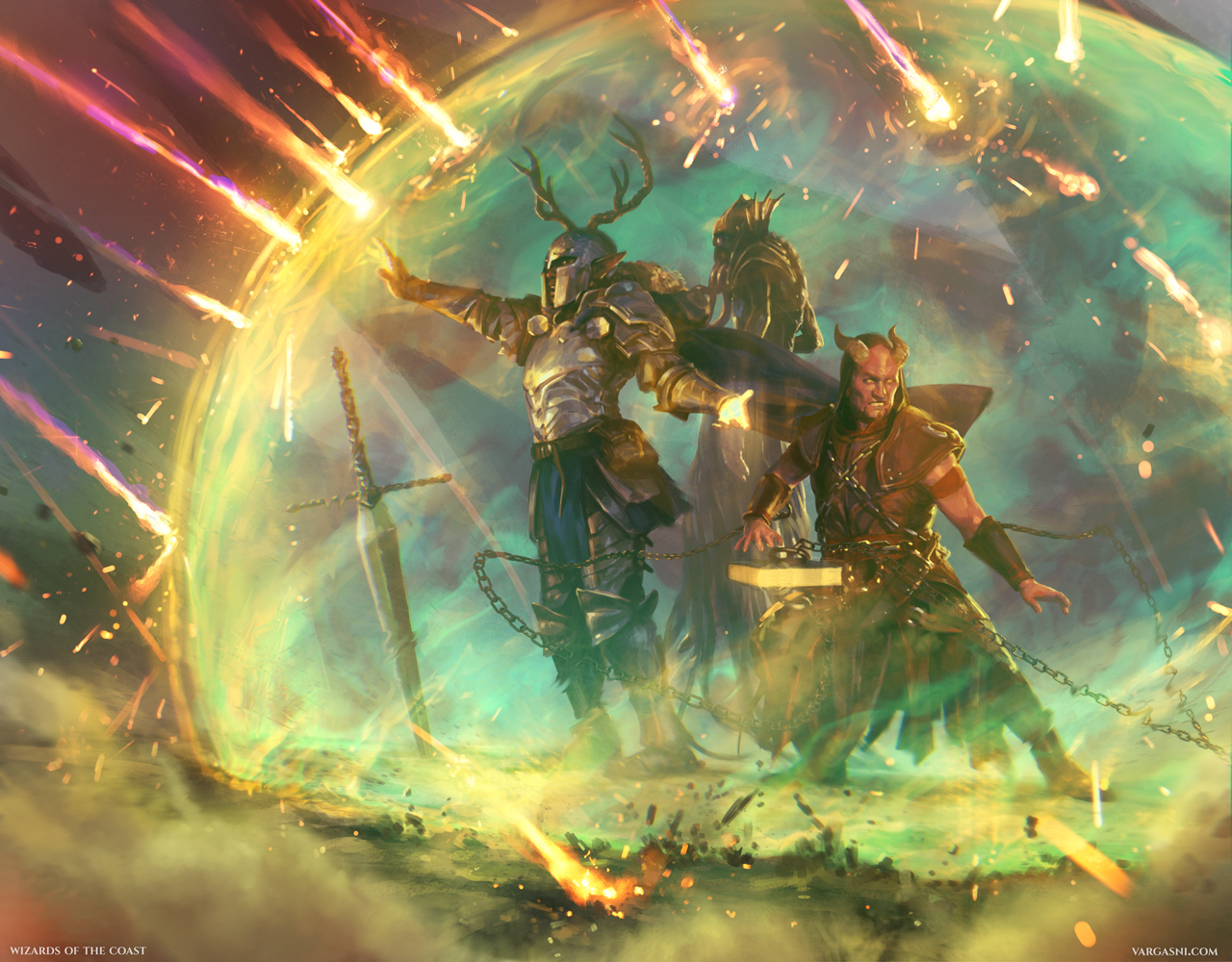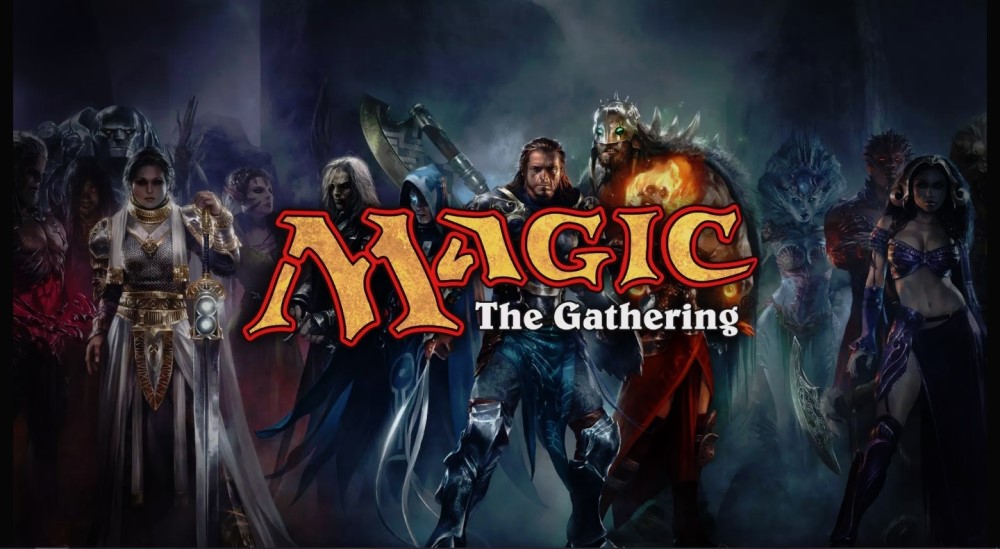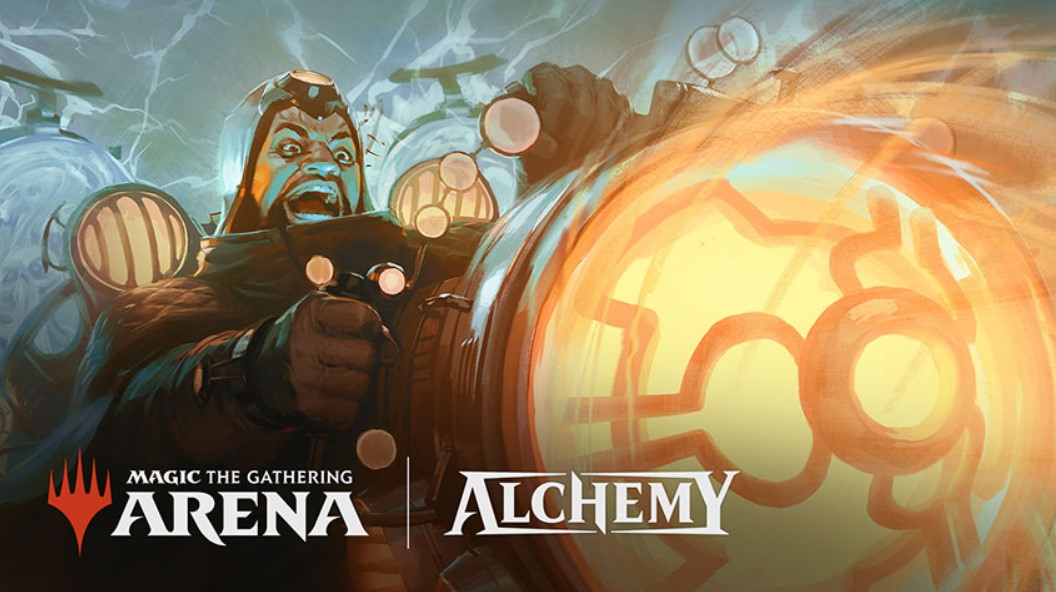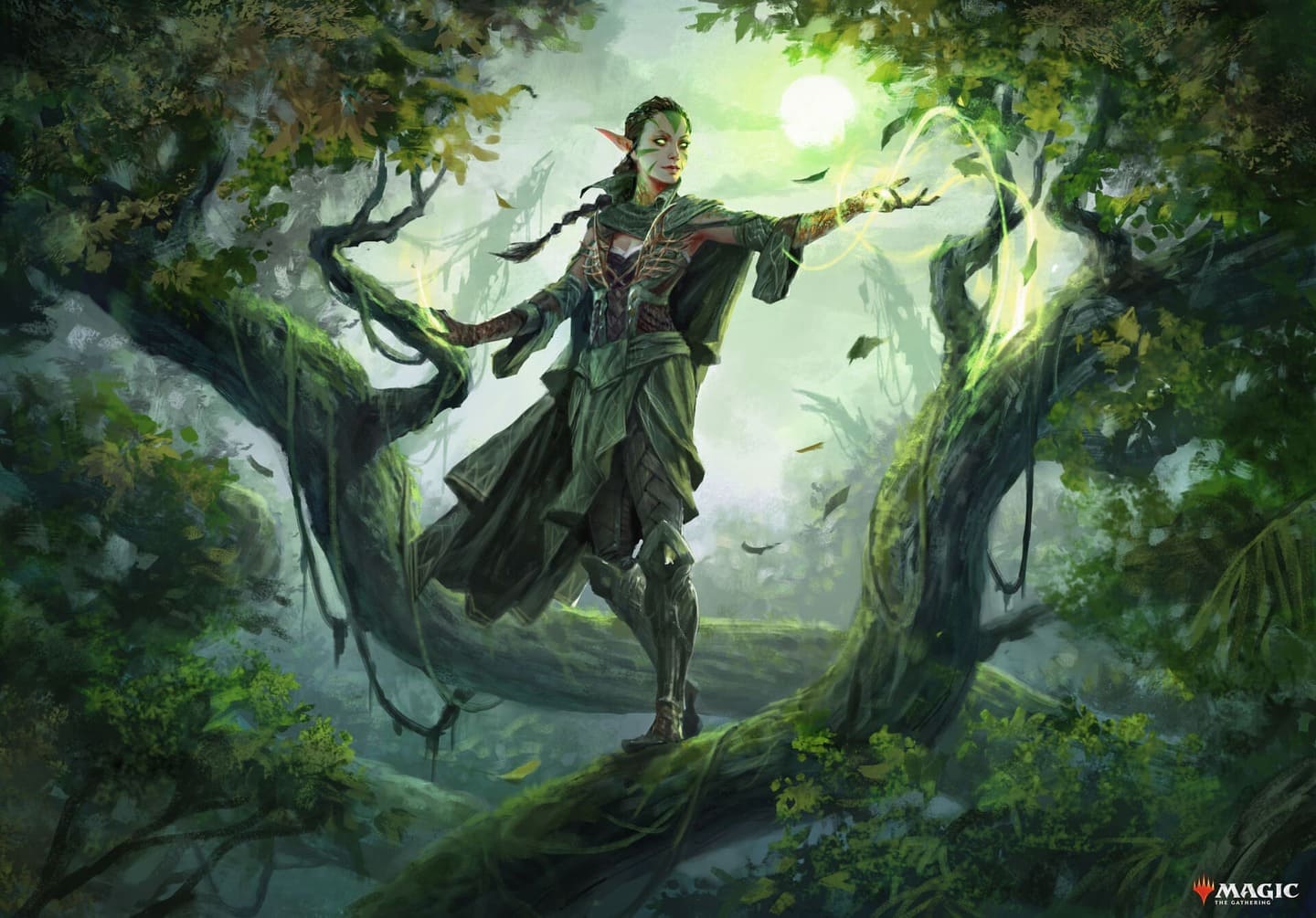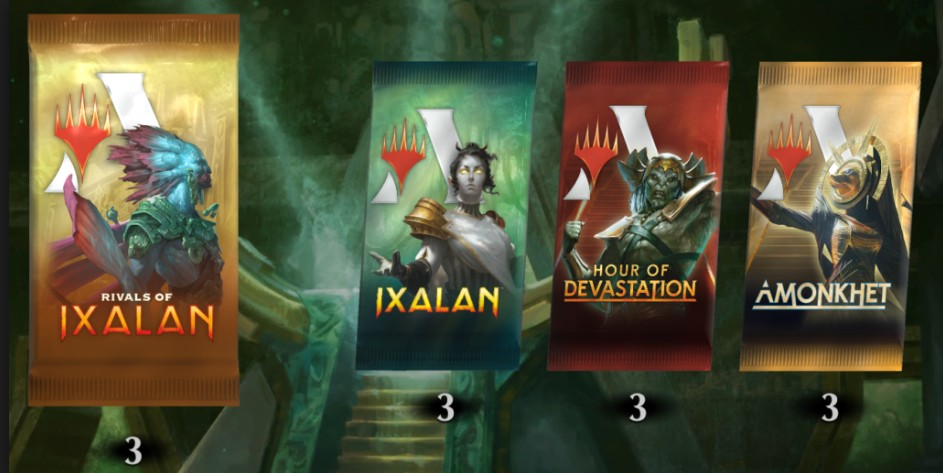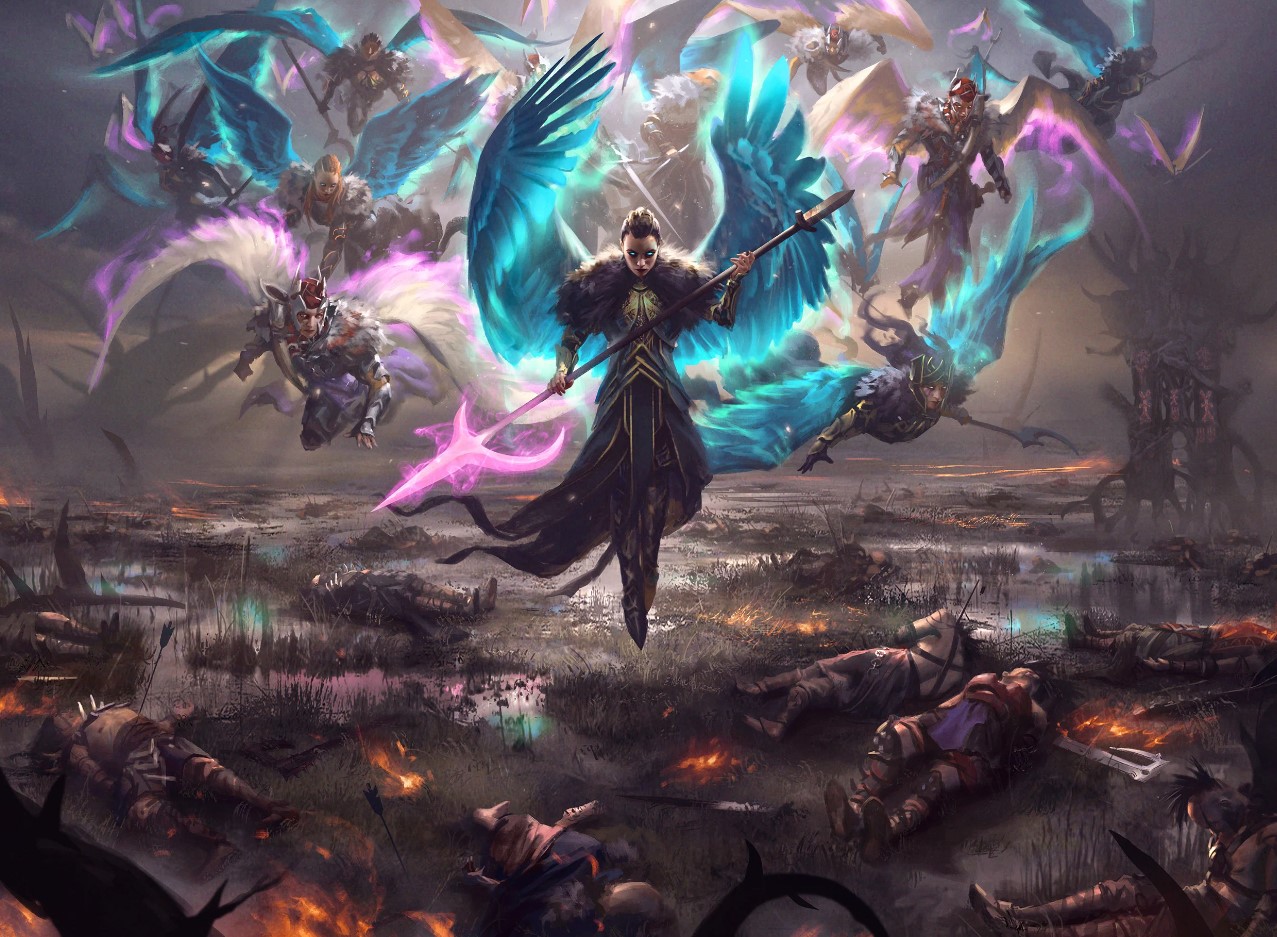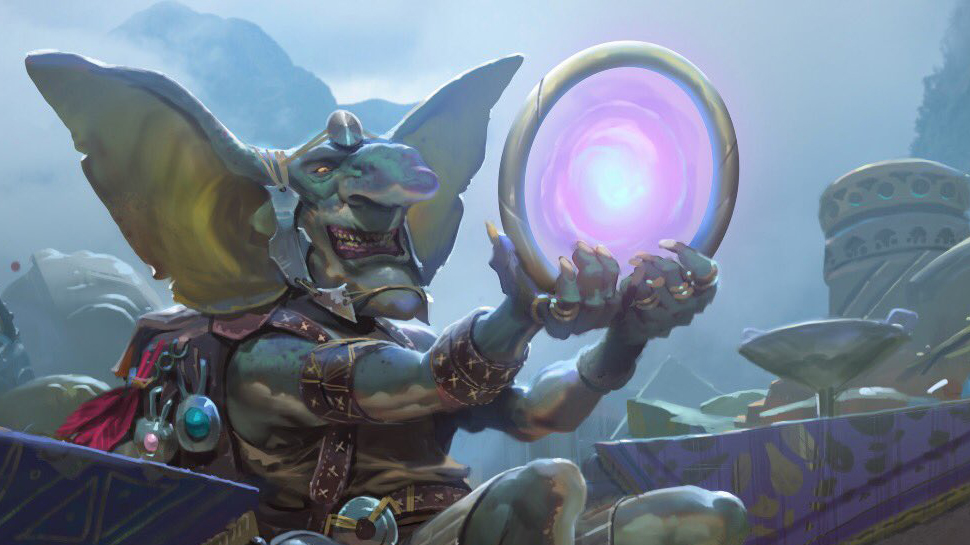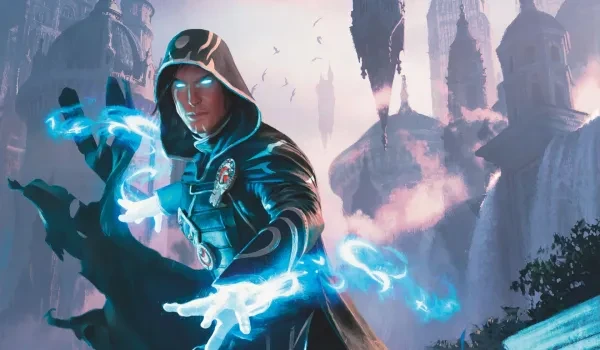
There are hundreds of different play styles in Magic the Gathering, one of which revolves around a mechanic called Mill. Milling is when you force your opponent to throw their cards directly into their graveyard, while self-milling is when you throw your own cards to the graveyard. While doing it to your opponent may seem like a no brainer, it may seem counterintuitive to do it to yourself, right?
Mechanics like Flashback let you cast creatures from the grave to the battlefield, Dredge lets you exile cards from the graveyard to substitute the mana cost, and some cards just straight up say you may cast this card from the graveyard. One of my favorites being a zombie card called Relentless Dead which lets you return it to your hand when it dies for one mana, and then return another zombie of your choice directly to the battlefield.
Milling your opponent’s deck is an easy and surefire way to make sure they don’t have the ability to come up with a response to your damage. Hours spent pouring over each card in their deck to synergize with the others, gone in an instant (and for a fraction of the cost of removal). One of the most famous planeswalkers to focus on this type of magic is Jace Beleren, who specializes in mind magic, represented in the game by ripping your opponent’s cards to the grave before they can even be played.
15. Palantir of Orthanc
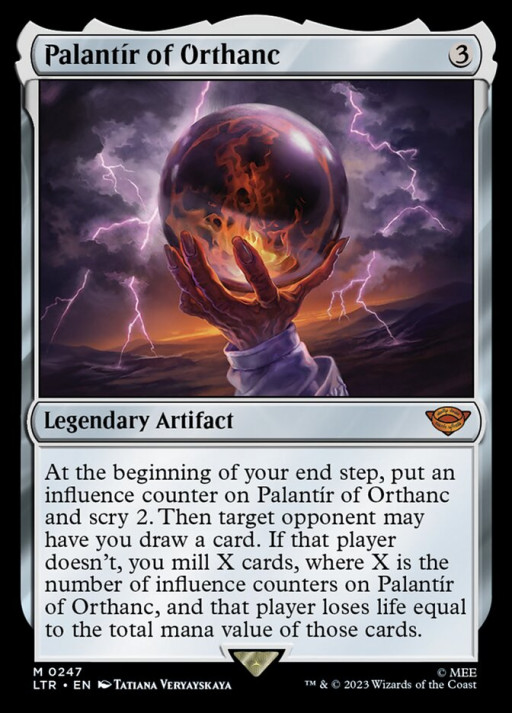
To start off our list we have an artifact called the Palantir of Orthanc. It can be a little temperamental since it requires your opponent to choose whether or not you actually mill cards but all the other abilities that come with it balance things out. It’s a hard choice to make, in the early game your opponent isn’t going to want you to gain an edge in drawing ahead and by the late game they're going to be terrified of what you could draw.
More than likely you’re going to mill more than once until your opponent truly can’t take the penalty. Using this card in a black/green Golgari self-mill deck would definitely benefit more than a few cards like Fiend Artisan or the dreaded Gitrog Monster. You can also be a little sneaky and instant speed Proliferate, which lets you add another counter of an already existing type, right after your opponent declares their choice to deal a little extra damage.
- Three colorless mana that persists on the field and lets you scry the top two cards of your deck for free each turn.
- Can be exploited with the Proliferate mechanic.
- Even if your opponent chooses not to have you mill cards, you still get an extra draw instead.
14. Thought Scour
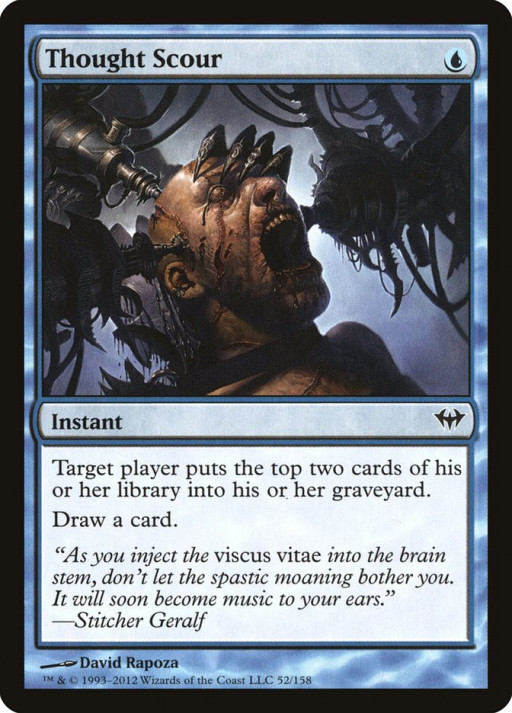
The next card on this list isn’t exactly a game winner or the catalyst of a game winning combo. It is however, a staple on most every mill focused deck and many more that contain the color blue. First appearing in 2012, Thought Scour quickly became a fan favorite for its ludicrously low cost and complete upside effects.
Making your opponent lose two cards that could have ended the game has never been a bad play. It would be easy to stop there and have the ability to play another card for your turn but Thought Scour took it a step further, giving you an extra draw along with it. Mono blue or red/blue Izzet decks started to latch onto this card to pump up now staples like Sprite Dragon which gains a +1/+1 counter every time you cast an instant or sorcery spell.
- One cost instant speed spell.
- Causes your opponent to mill two and gives you an extra draw.
- Can be used consistently to pump other Izzet cards.
13. Tome Scour

Another mill or Izzet staple, Tome Scour sits right alongside the previous Thought Scour in quite a few decks. Tome Scour has a much harsher focus on milling your opponent though which places it just slightly higher than its counterpart.
One blue mana and your opponent loses five cards that they chose, specifically to use in conjunction with the rest of their deck. You more than likely are going to play something else with it unless you're doing this on your very first turn, in which case you’re getting a pretty good idea of what you're up against.
Like Thought Scour before, this is a great card to use in combination with cards that trigger when casting an instant or sorcery spell. With such a low cost you’re free to play a creature like Niv Mizzet, Parun first who gives you a free draw every time you cast an instant or sorcery, as well as dealing one damage to your opponent when you draw a card.
- Single blue mana that eliminates five cards in your opponent's deck.
- Can be used in combination with other Izzet cards like Sprite Dragon or Niv Mizzet.
- Elmating five creatures would cost so much mana that doing it for one almost seems like cheating, right?
12. Ashiok, Dream Render
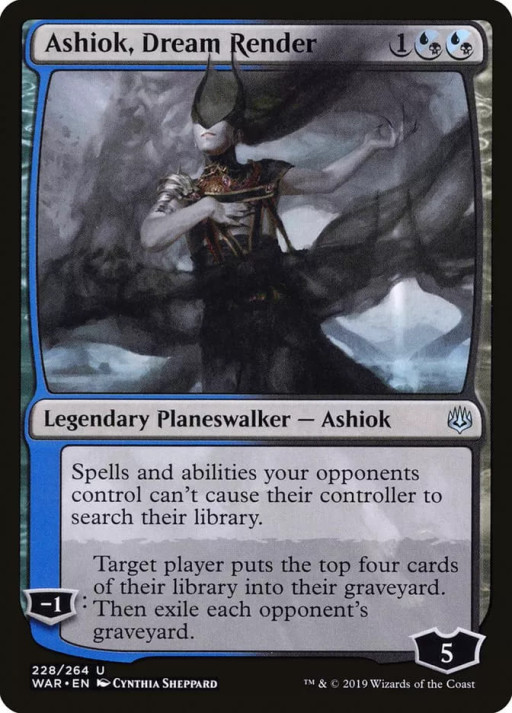
Our first Planeswalker on the list (but certainly not our last) Ahiok, Dream Render is a perfect example of what Dimir is all about. Three cost blue or black, Ashiok has no way of gaining loyalty tokens, instead giving you five opportunities to mill your opponent and exile their graveyard, ridding them of the unwanted cards for good.
Ashiok also comes with a passive ability that shuts down your opponent’s ability to search their deck for cards. This mainly means they can’t search for lands, which in multi-colored decks is a big problem. There are very powerful cards like Demonic Tutor or Primeval Titan that let you search for any card in your deck which Ashiok completely shuts down.
Unfortunately other than those effects Ashiok doesn’t have much else going on. The abilities are definitely useful and can control the entire tide of battle or, you could only get utility from the -1 ability.
- Shuts down your opponent’s ability to search their deck.
- Gives you five casts of milling your opponent and exiling their graveyard, which can help against Golgari or Dimir decks.
- Is an uncommon planeswalker, which means it is relatively easy to come by.
11. Hedron Crab/Ruin Crab
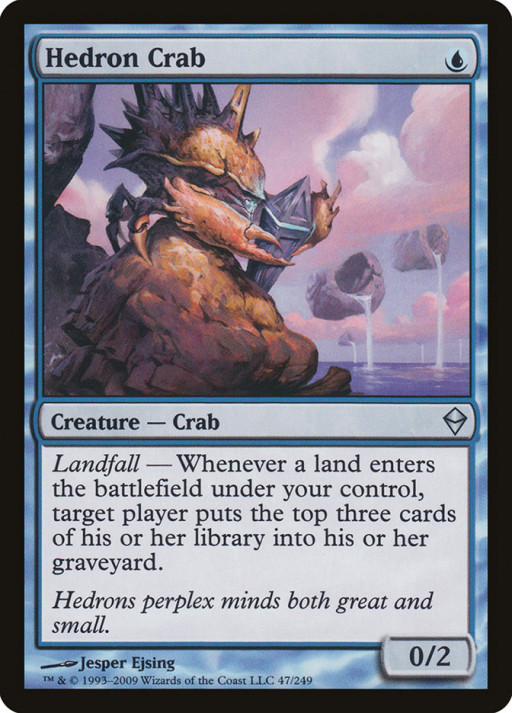
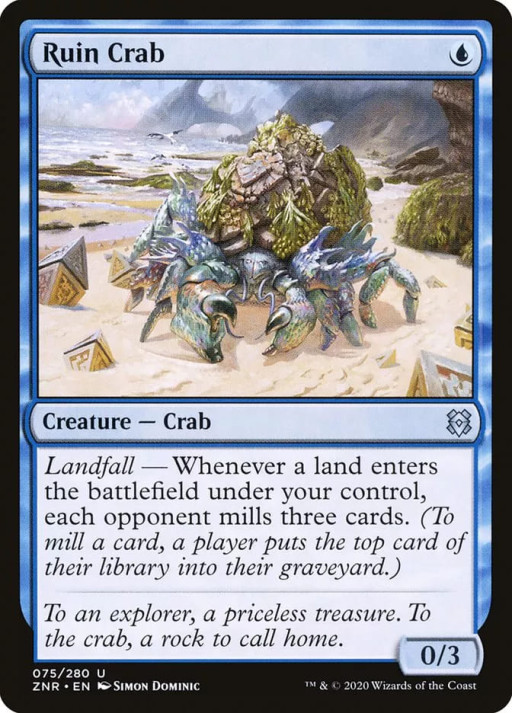
Our next mill specialist is a twofer because, well, they're basically the same card with different names and slightly different abilities. This is important because it means instead of the normal four card limit you now have eight chances of drawing into one of these mill engines. Eight may not seem like a lot but in a deck of sixty cards one of these will show up in your opening hand so often you will use them almost every game.
The trick with these two crabs is to get them out as fast as possible. For one mana and very likely odds that one will appear in your opening hand, you’ll be whittling away your opponent’s deck from the moment, go. The fact that neither of these are legendary also means you can have all eight on the board at once and trigger all their effects simultaneously.
The big distinction between the two is one line of text hidden within Hedron Crab’s ability. While Ruin Crab mills your opponent’s, Hedron Crab can all mill yourself. That opens up a lot more possibilities when paired with the cards Emry, Lurker of the Loch, which makes an appearance further up this list.
- Can be used in the same deck to gain essentially eight copies of the same card, instead of the usual four.
- If gotten out on turn one, you will be almost guaranteed to mill your opponent every turn.
- Becomes a lighting rod for your opponents removal spells, luckily you have seven more right?
10. Skull Prophet
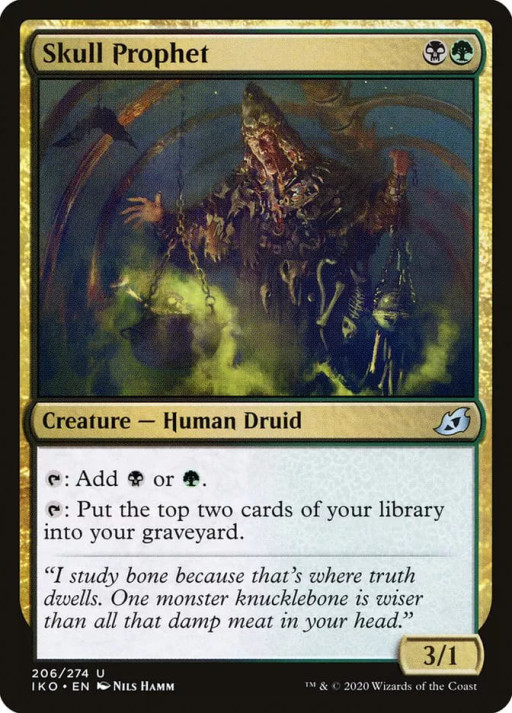
Another staple in mill decks, Skull Prophet finds its way in many self-mill archetypes instead of focusing on getting rid of your opponent’s cards. I’ve built my fair share of black/green Golgari self-mill decks that run a playset of Skull Prophet, focusing on pumping up a card called Fiend Artisan by giving it a +1/+1 counter for every creature in my own graveyard.
What makes Skull Prophets so good is its utility. For one black and one green mana, you can either throw things in your grave to fuel other cards or, produce either color mana for other ventures. That tap for mana bit is important as most mana dorks, as they’re usually referred, either tap for a singular mana or colorless mana which can’t pay for specific color costs.
Self-mill decks rely on having consistent ways of managing their graveyard, whether that’s pulling things out for a cheaper cost, or being able to put things into it to benefit your other cards. Skull Prophet is slotted into most Golgari decks, regardless of the win condition, because it is such a reliable source of gaining fuel.
- Two cost gets you a mana dork with either black or green mana.
- Can be used to feed your graveyard every turn.
- Heavy power means you can use it as a blocker or attacker if all else fails.
9. Grinding Station

Grinding Station is really the starting point of the game of chess that blue ends up devolving into. Our previous cards were pretty straightforward, being used in most cases, exactly as they say but, Grinding Station requires a little more thought and planning to be used to its full potential. There are a half dozen different types of sacrificial tokens in Magic the Gathering. Food, Thopters, Treasure, Clues, the list goes on and on as well as different ways of proliferating even more of those tokens.
The entire purpose is to be used either for their intended purpose like drawing more cards or, to be thrown to one of the many “grinders” as they are often referred to. Cards like Altar of Dementia, Ayli, Eternal Pilgrim, and Animal Boneyard all require you to sacrifice a creature for their effect to work. Instead of sacrificing your own creatures you can create artifact tokens to use in this instance.
You can probably start to see why Grinding Station is so powerful. Every time one of those artifact tokens comes into play you can untap it and mill your opponent again. This means you have the possibility of creating an infinite combo that will cause your opponent to lose the game when their deck is completely empty.
- Only two cost means you can get this card out early.
- Non legendary so you can place an entire play set on the battlefield at once.
- Can be untapped with artifact tokens as well as normal artifact cards.
- Can be used to create an infinite combo and mill your opponent's entire deck.
8. Fractured Sanity
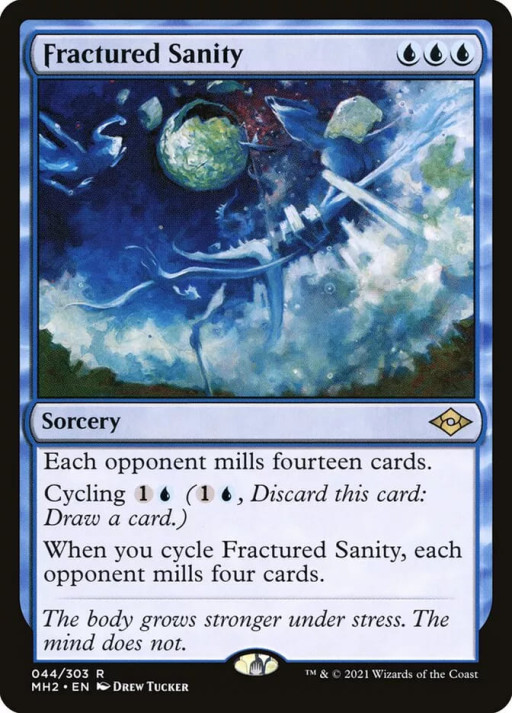
It’s honestly hard to believe Fractured Sanity is a rare. There aren’t many drawbacks to making your opponent mill fourteen cards from the top of their deck but, the fact that you can make them mill four and draw a card for one less mana gives this plenty of versatility. I’ve built a red/white/blue cycling deck that used this card just for its cycle trigger but there were more than a few games that had been stalled long enough to end it by milling them out of draws.
The drawbacks, little as they may be, do sort of define how and when this card can be used. The three blue mana for instance, isn’t necessarily a deal breaker in dual colored decks but it is a little difficult to pull off and even more so in triple colored. The sorcery speed also limits you to casting it only on your turn and only when nothing else has been cast but again, not really a deal breaker.
When you start to explore the combos revolving around copying or cascading into spells, the possibilities really open up. Mnemonic Deluge lets you pick a card from your graveyard and copy it three times without paying its mana cost. Consuming Aberration’s power and toughness are each defined by the number of cards in your opponent’s graveyard, so it’s at least a 14/14 with one cast of Fractured Sanity.
- At three cost, it’s one of the cheapest and most damaging mill cards in the list.
- If you just can’t hit that second or third blue mana then you can cycle it and still make your opponent mill.
- While its downsides are apparent they don’t hamstring the card.
7. Archive Trap
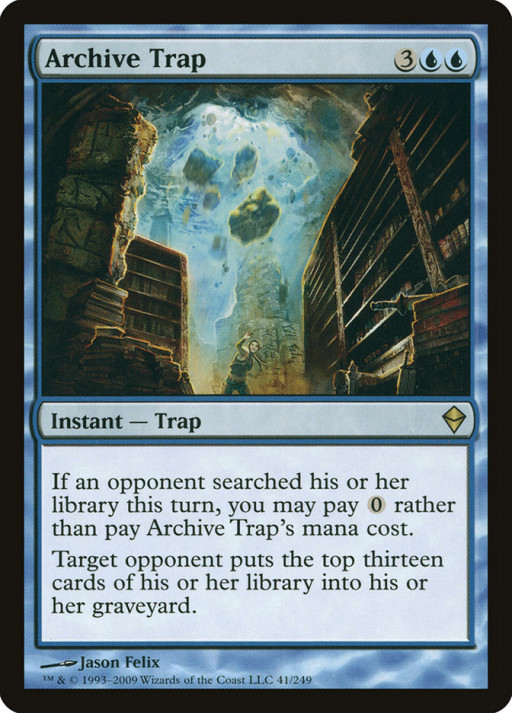
Archive trap may not be all that great at first glance since it requires your opponent to search for a card to be cast for free but that effect triggers on search lands as well. If you have this card in your opening hand and your opponent casts a card like Evolving Wilds, you can play this on turn one for free. That’s really the meat and potatoes of Archive Trap, getting to mill your opponent literally for free as early as turn one.
Of course there are other ways of abusing an instant speed card in blue.This could be used with Ral, Storm Conduit, to mill twenty six cards from your opponent for free if he is already on the board. Or Thousand Year Storm, which makes copies of a spell for each instant and sorcery cast this turn already.
Unfortunately Archive Trap is only legal in a handful of sets, one of which being EDH, meaning you can only run one copy in a deck of 99 others. For that reason it has to sit a little further up the list than some of the others.
- Can be cast for free as early as turn one with search lands.
- Can be copied with Thousand Year Storm to win the game with less than ten mana.
- Free +1/+1 counter if using a card like Sprite Dragon.
6. Emry, Lurker of the Loch
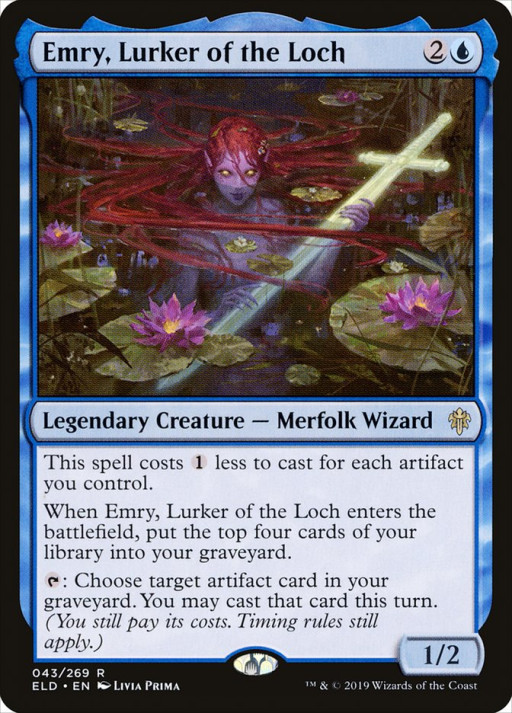
A bit of a unique contender to the list, Emry, Lurker of the Loch is a self-mill card used in blue/black Dimir decks, primarily focused on secrecy and underhanded deeds. Think of them as the thieves guild from most fantasy works except they really like to do things to upset their opponents. Luckily Emry’s focus is more on utilizing your own grave over discarding your opponents.
Cards like Mirran Spy let you untap another target creature (Emry) whenever you cast an artifact spell. Others like Lotus Petal let you sacrifice it to gain mana, giving you essentially an infinite mana combo. Emry really does sit best as a mono blue commander, since artifacts are colorless and can be used without the EDH restrictions.
Two cards we have already talked about on this list, Palantir of Orthanc and Grinding Station both become a lot more dangerous with Emry on the battlefield. There are hundreds of cards that can be used in combination with Emry’s third effect, letting you cast them over and over again from the grave.
- Can be cast for free if you control other artifacts, this includes from the commander zone.
- Upon entry, could give you up to four usable cards if they’re artifacts.
- Lots of ways to create an infinite combo, with cards like Mirran Spy and Lotus Petal.
- The Merfolk archetype has plenty of synergies, especially involving Islandwalk, which makes your creatures unblockable if your opponent controls an island.
5. Takenuma, Abandoned Mire
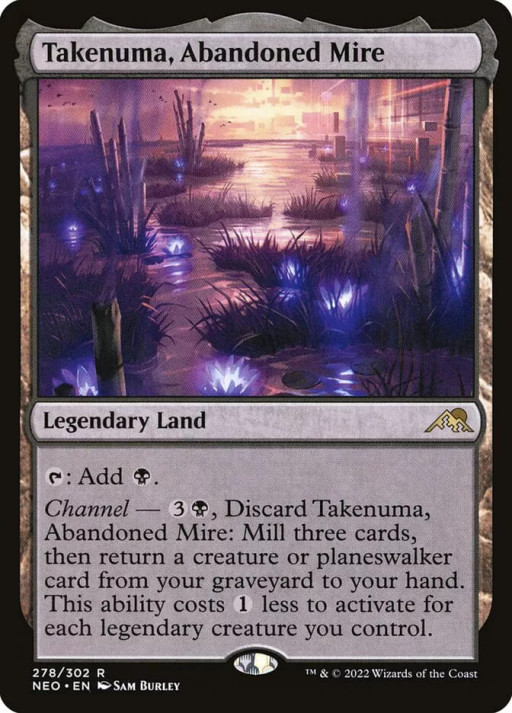
Lands play a big role in mill decks. There are quite a handful of useful lands that let you mill cards or interact with other abilities. The Gitrog Monster is a great example of this, forcing you to sacrifice a land or sacrifice itself, the upside is you get to play an extra land each turn.
Takenuma takes it a step further by letting you get the cost down to one black mana for its channel ability, and gives you a black mana when you tap it. The real kicker is you can tap this card for its mana then use it to pay for the channel ability to return of your creatures, or even better, a planeswalker back to your hand.
- Can be used to pay for its own cast by tapping it for mana then sacrificing it.
- Lets you pull a Planeswalker or creature back to your hand.
- When used with a card like Worldshaper, you can use it over and over again.
4. Tyvar, Jubilant Brawler
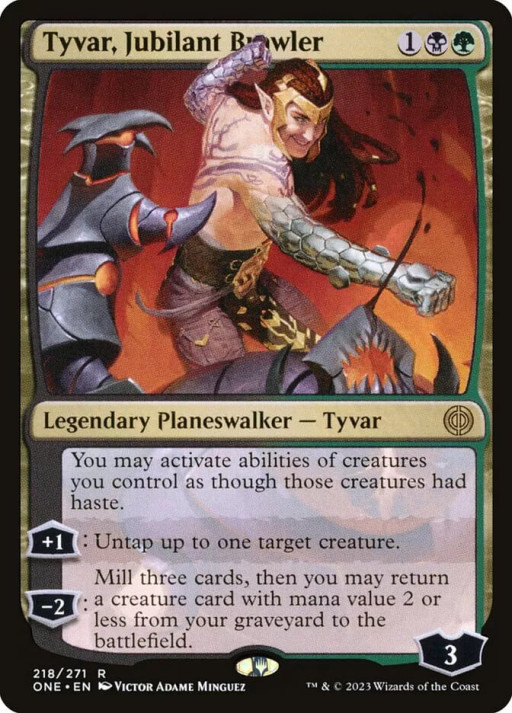
Our next Planeswalker on the list is based around the Golgari colors, green and black. These decks focus primarily on returning creatures from your graveyard for next to nothing so you need consistent ways of milling your own cards. That’s where cards like Tyvar come in, except instead of just milling yourself he comes stacked with a whole slew of other abilities.
His first passive lets you activate abilities as if the creature had haste. While this isn’t exactly haste since they can’t attack there are plenty of abilities that benefit from this. Any creature that taps for an amount of mana for instance gains immediate effect when they enter, giving you the opportunity to play more.
Using his +1 also lets you activate a creatures ability twice and make himself stronger in the process. What you’re really shooting for is his -2 that lets you mill yourself and then return a creature with mana value two or less straight to the battlefield. A card like Relentless Dead or even Fiend Artisan become a lot harder to deal with when you have a consistent way of pulling them back to the battlefield for free.
- Extremely low cost planeswalker that doesn’t really have a downside.
- Can turn on creatures abilities as though they had haste, just for sitting on the board.
- Having three counters to begin with means you can use his -2 immediately upon entering.
- The one ability he has that makes him stronger can be used to tap a creature twice, even if it entered this turn through his passive.
3. Jace, the Perfect Mind
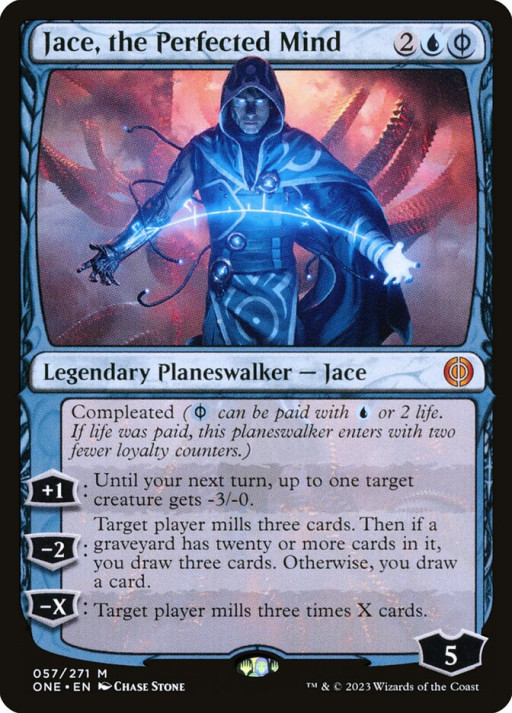
Finally to our top three, and I don’t think it will come to anyone as a surprise that they are all Planewalkers. Jace is the poster boy for mind altering magic like those in the flavor text of mill cards. Most of the game winning combinations revolving around him come from milling your opponent until they have no cards left to draw, or shutting down their ability to play altogether.
While I may not agree with the methods of the blue community, it's hard to argue with the results. One of the best ways to ensure you have the upper hand on your opponent is to make sure they can’t play anything right? Take his first ability which doesn’t outright kill an opponent's creature, instead negates most (if not all) damage done by it.
The big win with this particular model of Jace usually revolves around Proliferating more loyalty counters onto him and then wiping away their entire deck with his -X. Even if you don’t outright win the game with this ability, if you did it for his full loyalty of five counters when you cast him, that’s still fifteen cards. If it’s anywhere near mid or late game his -2 will usually net you three draws each turn if your opponent can’t come up with a solution.
- Can be cast with one life instead of a blue mana for faster deployment.
- Even if you cast him for his full cost, and immediately use his -X for five, that’s fifteen cards your opponent just lost for four mana.
- Can easily defend himself early on by giving your opponent’s attackers -3 to their power.
2. Grist, the Hunger Tide
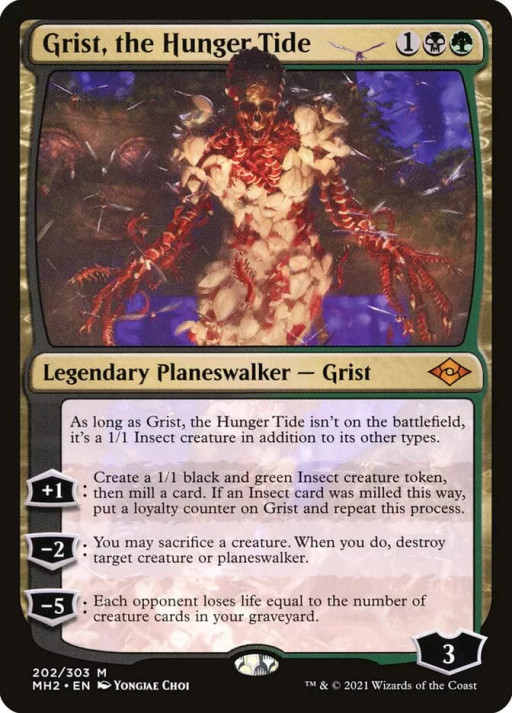
I love cards like Grist. Basically an amalgamation of different bugs controlling a skeletal frame, Grist revolves around an undead horde of insects that can quickly overwhelm any foe. From its passive ability that makes it an insect creature while not on the battlefield, to its literal -5 bomb which deals damage based on the number of cards in your graveyard.
While I wish Grist could be a commander, it can be searched up as an insect in modern decks. The playstyle of Grist usually revolves around shoveling your deck into your graveyard then dealing a massive amount of damage to your opponent directly. There are plenty of other cards that synergize with Grist’s ability, Izoni, Thousand Eyed gives you insect tokens for each creature in your graveyard, and Kessig Cagebreakers do the same but with 2/2 wolf tokens.
Where Grist really becomes overpowered is when used in combination with cards like Forever Young, which lets you put any number of creatures from the top of your deck into your graveyard. Peer Into the Abyss lets you draw half your deck then a simple one mana card called One With Nothing will let you discard your entire hand before the turn is over, then activating Grist for all the damage.
- Can almost infinitely add loyalty counters to itself if running enough insects.
- Has a reusable kill spell which can also target planeswalkers
- Combos like Peer Into the Abyss and One With Nothing, let you detonate yourself, taking out your opponent just before you go.
- For only three mana you can consistently get Grist out early on in your games.
1. Jace, Wielder of Mysteries
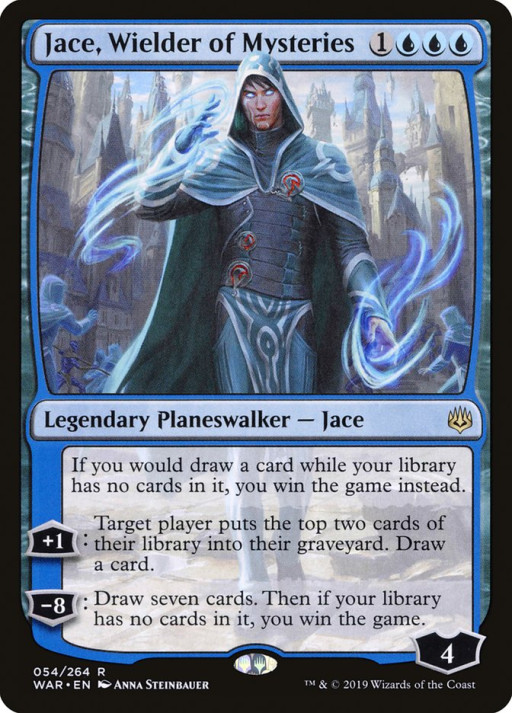
For anyone used to playing with or against mill decks I don’t think it would come as any surprise that this particular Jace would be at number one. We touched earlier about how Jace is the poster child of mind altering magic within Magic the Gathering and his Wielder of Mysteries form shows that off by completely changing the rules of the game.
Normally in Magic, if you were to run out of drawable cards in your deck you lose the game. It’s not an instant process, not taking effect until you physically cannot draw another card on your upkeep, but an effective one nonetheless. Jace takes that principle of milling your opponent and flips it, giving you the opportunity to win the game if you run out of drawable cards.
Now if you're unfamiliar the color blue in Magic has A LOT of this sort of thing. One cost cards like Consider, Brainstorm, and Birthday Escape all let you draw one or more cards for very cheap, which is the whole point of this deck. When you start mixing in black cards that can self mill it becomes very easy to transfer large portions of your deck right over to the graveyard. His +1 alone lets you target yourself, removing three cards each turn and bringing you that much closer to his -8.
- His +1 gives you a free draw, and also can be used to mill yourself or your opponent separate from the draw.
- Plenty of blue cards let you proliferate more loyalty counters onto Jace.
- Even if you don’t draw out with him, you still win the game with his passive.
Final Thoughts
While I don’t necessarily agree with how blue players tend to shut their opponents down, refusing to let you play while they smirk at you from across the table, it is still a valid form of winning the game. You have to account for all forms of attack in Magic, not just the ones that are fair, that you like, or even skirt the rules of legality. That’s what makes this game so fun, is you have the ability to change your playstyle and come up with new strategies to combat unique and different decks like ones that use mill tactics.
While I don’t see myself running to put together a new blue deck anytime soon, the research I did on these cards helped me to understand them a little bit better. I now know just a little more of what I should expect and how to deal with these curve balls. As long as we can have fun playing the game, without it affecting ourselves personally outside of it, I have no problem with someone trying to shut me down in a different way. I just have to learn to adapt and overcome the newest obstacles that will always be presented within this game.

